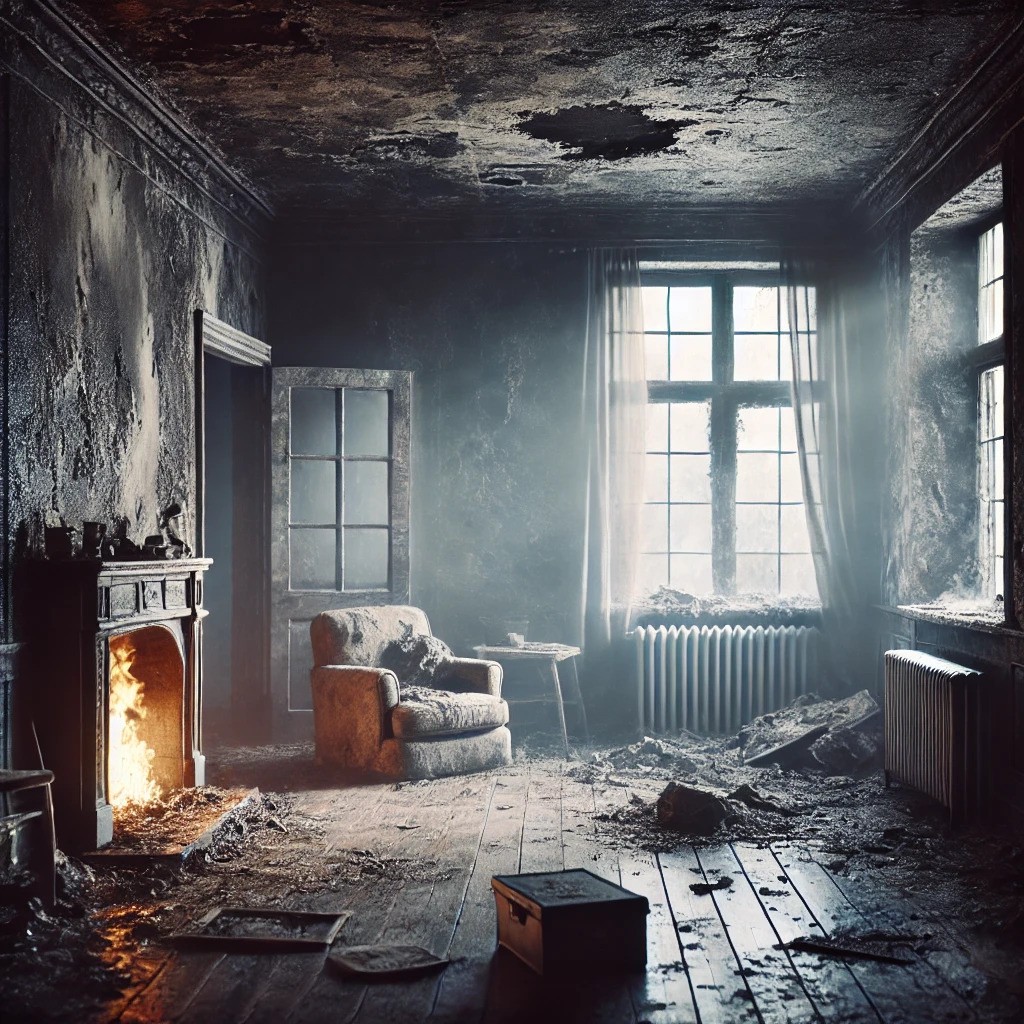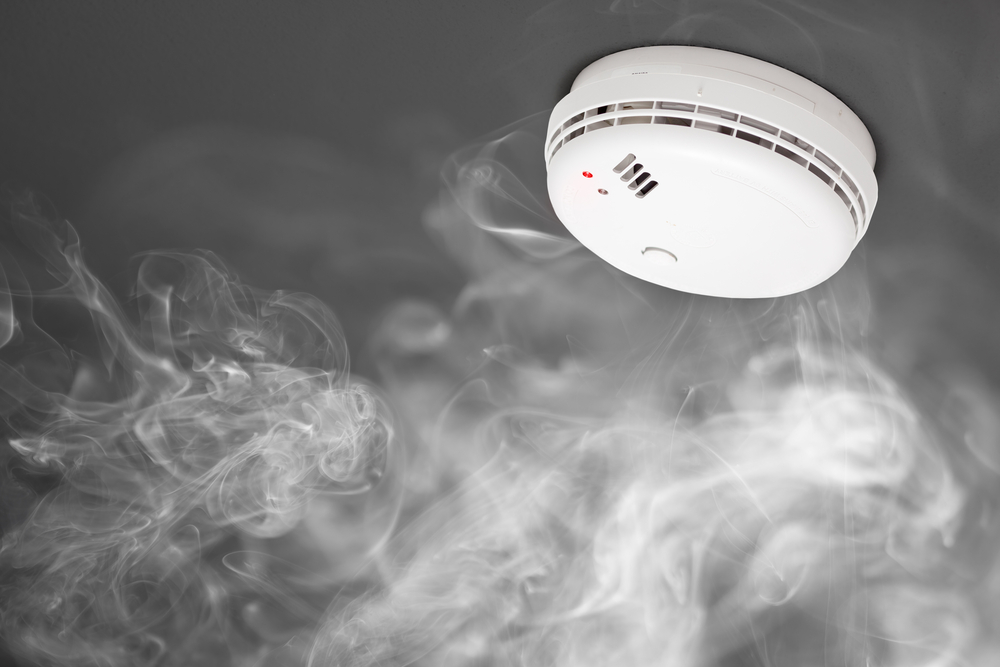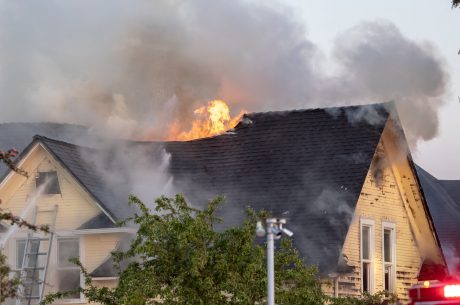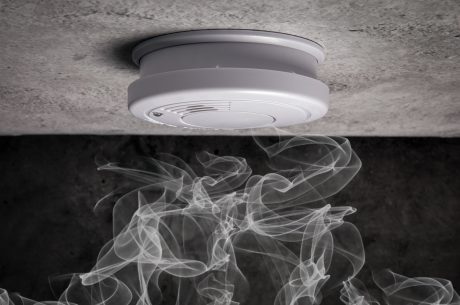Table of Contents

When a fire occurs, the immediate damage caused by flames is often visible and dramatic. However, once the flames are extinguished, many homeowners overlook the lasting and often invisible impact. Beyond the obvious soot and residue, smoke can have lingering effects on health, property value, and the structural integrity of a home. Here, we’ll explore the hidden dangers of smoke damage after a fire and why prompt, professional restoration is essential.
What Is Smoke Damage?
Smoke damage results from the fine particles, gases, and chemicals released during a fire, which permeate every corner of a property. As smoke travels, it leaves behind residue, soot, and an odor that can linger long after the fire is extinguished. Smoke particles are incredibly small, allowing them to seep into walls, ceilings, furniture, electronics, and even HVAC systems. This pervasive nature makes the damage a significant threat, often more complex to resolve than the visible fire damage.
1. Health Risks of Smoke Damage
One of the most pressing dangers of smoke damage is the health risk it poses. Even after the smoke clears, harmful toxins and particles remain, which can lead to respiratory issues, skin irritation, and other health problems.
- Respiratory Irritation: Fine smoke particles can irritate the respiratory system, causing coughing, wheezing, and shortness of breath. Individuals with asthma, allergies, or other respiratory conditions are particularly vulnerable to these effects.
- Toxic Exposure: Burning household items release toxic chemicals, such as carbon monoxide, formaldehyde, and other volatile organic compounds (VOCs). Prolonged exposure to these toxins in smoke can lead to chronic health issues, particularly affecting children, the elderly, and individuals with weakened immune systems.
- Long-Term Health Concerns: Studies have shown that long-term exposure to smoke residues can increase the risk of developing cardiovascular diseases, lung disease, and even certain cancers. This is why it’s crucial to address the damage thoroughly and promptly.
2. Damage to Structural Integrity
Smoke and soot can penetrate deeply into structural materials, leading to hidden smoke damage that affects a building’s stability over time.
- Corrosion of Metal Components: Smoke contains acidic compounds that corrode metal surfaces over time. Pipes, wiring, and other metal elements within walls and ceilings can deteriorate if exposed to smoke damage, compromising their strength and increasing the risk of future failures.
- Weakened Building Materials: The acidic nature of smoke can also weaken building materials like wood, drywall, and concrete. When these materials absorb smoke particles, they become more vulnerable to wear, decay, and long-term damage, eventually leading to costly repairs or even structural failure.
- Compromised Insulation and HVAC Systems: Smoke particles can easily infiltrate insulation and HVAC systems, affecting their efficiency and potentially spreading contaminants throughout the home long after the fire is extinguished. This poses ongoing risks not only to the property but also to its inhabitants.
3. Smoke Damage and Property Value
If the damage is not effectively addressed, it can have a lasting impact on a property’s market value. Future buyers are often wary of homes that have experienced a fire, and lingering smoke damage can lead to a decrease in property value or challenges during inspections and appraisals.
- Odor and Stains: Even if the structural damage is minimal, lingering smoke odors or visible soot stains on walls, ceilings, and surfaces can deter potential buyers. These signs of smoke damage create a negative impression and raise concerns about potential hidden issues.
- Costly Repairs and Replacements: Restoring a property with significant smoke damage is often a costly endeavor, involving professional cleaning, odor removal, and possibly replacing damaged materials. This extra cost can lead to a lower property valuation.
4. Impact on Electronics and Appliances
The damage doesn’t only affect structural elements; it also impacts electronics and appliances, which may seem intact after a fire but could suffer from internal smoke damage.
- Soot and Residue Build-Up: The fine particles in smoke can settle inside electronics, coating circuits, and internal components. This residue can cause short circuits, overheating, and even complete system failures.
- Corrosion of Internal Components: The chemicals in smoke are corrosive, meaning that, over time, they can erode wiring, connectors, and other sensitive parts inside devices. Even after the fire is gone, smoke damage can continue to deteriorate electronics, leading to unexpected breakdowns.
- Safety Hazards: Damaged electronics are a safety risk, especially if compromised by smoke damage. Short circuits or electrical malfunctions can lead to additional fires or dangerous conditions, making it essential to inspect and, if necessary, replace affected devices.
5. Persistent Odors from Smoke Damage
Odor removal is one of the most challenging aspects. The tiny smoke particles that cause odor embed themselves into porous materials, such as fabrics, carpets, and drywall, making them nearly impossible to remove with standard cleaning methods.
- Lingering Smell: The smell of smoke can linger for months or even years without proper treatment. This can make it difficult for homeowners to feel comfortable and safe in their own space and can also affect indoor air quality.
- Professional Odor Removal: Professional restoration services use specialized equipment and techniques, such as thermal fogging, ozone treatments, and air scrubbers, to neutralize smoke particles and eliminate odors. Addressing odor is vital to restoring a home to a safe, livable state.
How to Properly Address Smoke Damage After a Fire
Due to the extensive and hidden nature of smoke damage, restoration requires professional expertise. Here are key steps to ensure thorough restoration:
- Assessment and Inspection: Restoration specialists inspect the property to assess the extent of the damage in each area, including structural elements, personal belongings, and HVAC systems.
- Cleaning and Deodorizing: Professional-grade cleaning agents and equipment remove soot, residue, and odors. This involves cleaning all affected surfaces, fabrics, and air ducts to ensure no smoke particles remain.
- Air Purification: Using HEPA filters and air scrubbers, professionals remove any lingering airborne smoke particles and restore indoor air quality.
- Structural Restoration and Repairs: Any damaged or weakened materials, from drywall to insulation, may need repair or replacement to restore the home’s safety and structural integrity.
Conclusion: The Importance of Prompt Smoke Damage Restoration
The hidden dangers of smoke damage extend far beyond what meets the eye, impacting health, property value, and structural integrity. Failing to address the damage immediately can lead to long-term complications, additional expenses, and potential safety hazards. Professional smoke damage restoration is essential in ensuring that your home is fully restored and safe for you and your family.
By taking swift action and investing in professional smoke damage restoration, homeowners can minimize the effects and regain a sense of comfort and safety in their living space. Contact us now on +1 305 894-4343 for smoke damage restoration. We are available 24/7 to respond immediately.


